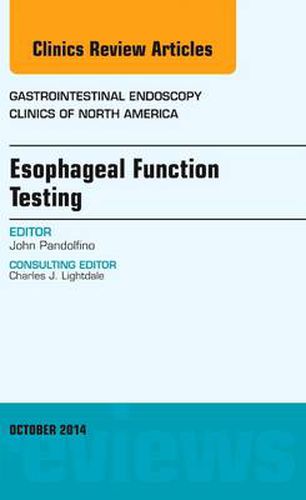Readings Newsletter
Become a Readings Member to make your shopping experience even easier.
Sign in or sign up for free!
You’re not far away from qualifying for FREE standard shipping within Australia
You’ve qualified for FREE standard shipping within Australia
The cart is loading…






This issue devoted to Esophageal Function Testing highlights these tests that are complimentary to endoscopy and should be considered after endoscopy is performed. In fact, a prerequisite for performing many of these studies is a negative endoscopy and thus, the endoscopist should be well-informed regarding the indication and utility of these tests. Additionally, some of these newer technologies require endoscopy to be performed during the study as the placement or positioning of the measurement tool will require endoscopic landmarks or direct placement. There have been major advances in most of these older techniques, and new novel measurement paradigms have been created that allow for a more visual and accurate depiction of physiologic and anatomic data. These technologies have evolved to be more akin to an imaging technique and thus, the visual display and data acquisition is much more intuitive and easier to teach to trainees. This review would be of the utmost importance to readers of GI Endoscospy Clinics.
$9.00 standard shipping within Australia
FREE standard shipping within Australia for orders over $100.00
Express & International shipping calculated at checkout
This issue devoted to Esophageal Function Testing highlights these tests that are complimentary to endoscopy and should be considered after endoscopy is performed. In fact, a prerequisite for performing many of these studies is a negative endoscopy and thus, the endoscopist should be well-informed regarding the indication and utility of these tests. Additionally, some of these newer technologies require endoscopy to be performed during the study as the placement or positioning of the measurement tool will require endoscopic landmarks or direct placement. There have been major advances in most of these older techniques, and new novel measurement paradigms have been created that allow for a more visual and accurate depiction of physiologic and anatomic data. These technologies have evolved to be more akin to an imaging technique and thus, the visual display and data acquisition is much more intuitive and easier to teach to trainees. This review would be of the utmost importance to readers of GI Endoscospy Clinics.